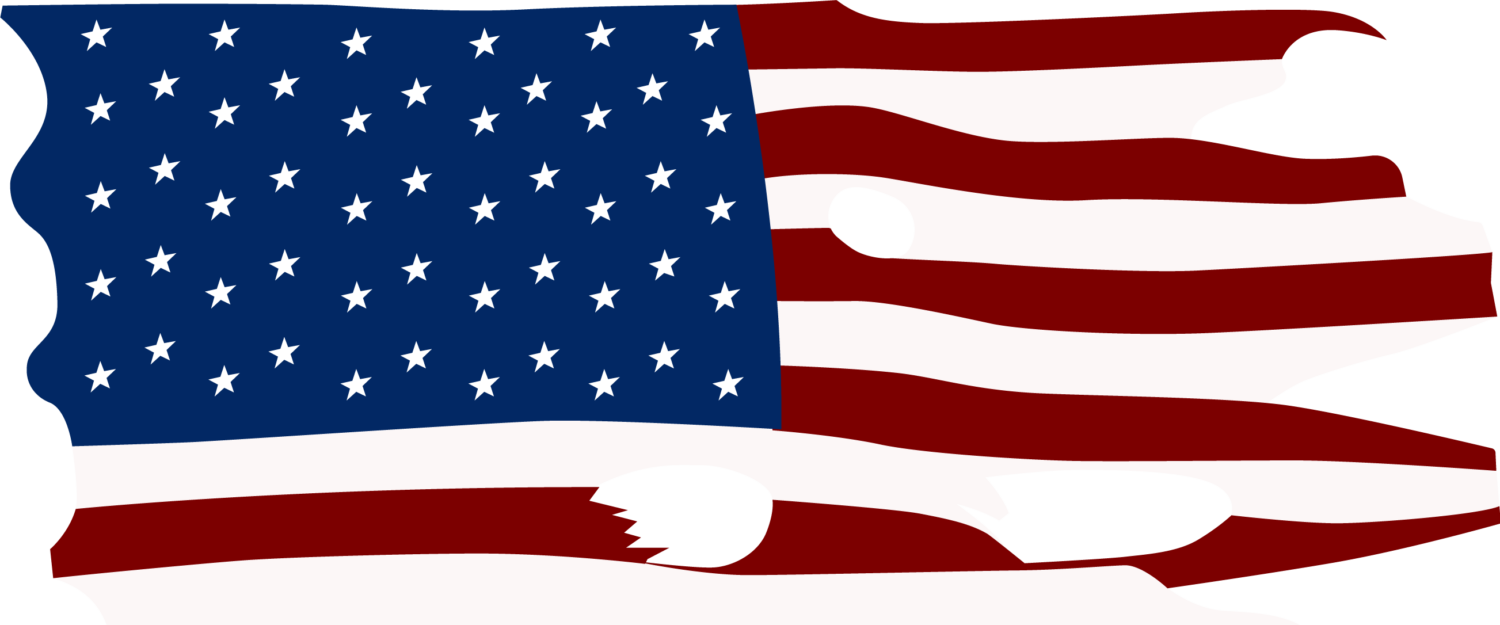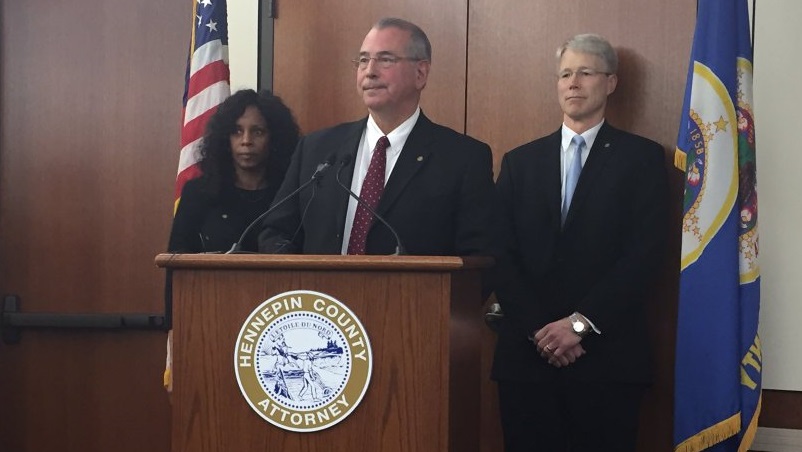Jamar Clark was not handcuffed and refused to take his hand off an officer’s gun, so a second officer shot Clark in the head, County Attorney Mike Freeman spelled out, based on the investigation.
For more than 30 minutes in a downtown Minneapolis news conference and with Clark’s family and supporters present, Freeman laid out in meticulous detail the evidence that led to his decision and showed video from the scene on Plymouth Avenue N.
Clark, 24, a black man, was shot in the head during the scuffle with the two white Minneapolis police officers, Mark Ringgenberg and Dustin Schwarze, on Nov. 15 as Clark confronted paramedics placing his injured girlfriend in an ambulance.
The shooting led to international attention, widespread local protests, and an 18-day encampment outside the police department’s Fourth Precinct in north Minneapolis, near the site of the shooting.
In a prelude to rolling out the evidence followed by his decision, Freeman nodded to the spate of killings of black citizens by police officers in Chicago, Cleveland and elsewhere in the past year or so, saying, “This case is not at all similar to others seen around the country,” he said. The officers “did not have an opportunity to withdraw” from the physical conflict with Clark.
Speaking for the officers later Wednesday, police union President Lt. Bob Kroll said the two “anticipated this [outcome]. They knew they had to do what they had to do. … They felt terrible about it. … Their families have gone through a hell.”
Kroll said the evidence confirms what “we maintained from the start,” and he hopes that anyone disappointed by Freeman’s decision to “peacefully accept the outcome that exonerated” the officers.
Much of what the investigation found, including video, was being posted Wednesday on the county attorney’s website. Freeman said “this degree of transparency … is unprecedented.” Evidence Freeman released also includes Clark’s autopsy report and full transcriptions of interviews with police and witnesses.
Kroll said that “members of the public demanded an independent investigation, which was conducted by the Bureau of Criminal Apprehension. Members of the public demanded oversight, which a provided by the United States Department of Justice. Members of the public demanded a grand jury process not be used, and the Hennepin County Attorney agreed. … I don’t know what more they want. It has been as transparent as it can be.”
In a written statement, Mayor Betsy Hodges complimented Freeman for his “transparency … and his willingness to be publicly accountable for his decision.”
In the statement, Hodges declined to say whether she agreed with Freeman’s conclusion. At the follow-up news conference, she said she was not ready to endorse the county attorney’s findings. “I have not had a chance to look at the evidence,” she said.
Police Chief Janeé Harteau, said her department will be make no decisions on disciplining the officers until a previously requested federal investigation is concluded and until the department carries out its own internal investigation.
Once Freeman revealed his decision at the news conference, Raeisha Williams, communications director for the Minneapolis chapter of the NAACP and a City Council candidate, said, “If the city burns, it’s on your hands.”
Miski Noor, a Black Lives Matter organizer, downplayed Williams’ comment, saying, “I don’t think Raeisha is advocating [violence]. … I think her point is people are frustrated and are upset because yet again the justice system does not value black life.”
Public protest for much of the afternoon has been nominal. Plans for two gatherings in response to Freeman’s decision are in the works. A rally organized by Justice4Jamar, is scheduled to start at 5 p.m. at Plymouth and James Avenues N., near where Clark was shot. The groups Black Lives Matter Minneapolis and Justice4Jamar announced on Facebook a gathering at 6 p.m. Wednesday in Elliot Park, just south of downtown.
Harteau said her department and other law enforcement agencies have several contingency plans in place should police action against protesters be necessary. “Officers will exercise restraint,” she said. “Their actions will be based on the actions of others.”
On the North Side, some businesses announced early in the afternoon that they were closing, including Cub Foods on Broadway, one of the few supermarket options for residents in that part of the city.
At the scene where Clark was shot, a handful of protesters briefly obstructed vehicles passing by. They stood in the street and strung a bench and other items across the lanes in both directions. A makeshift memorial to Clark clung to a tree nearby.
Outside the Fourth Precinct, officers sporting shielded helmets took up position. Nearby was a “peace pole” that read, “May Peace Prevail on Earth.”
In his detailed account of the night Clark was shot, Freeman said.
Officers told Clark to take his hands out of his pockets and he wouldn’t. Ringgenberg, who had initially drawn his gun, put it back in the holster and grabbed Clark’s right wrist. Schwarze grabbed Clark’s other arm and dropped his handcuffs while trying to cuff him. Ringgenberg then tried a takedown move of Clark, and they both fell to the ground with Ringgenberg’s back to Clark’s stomach.
Ringgenberg felt his holstered gun go from his hip to the small of his back. Ringgenberg reached back and felt Clark’s hand on his gun. He repeatedly told Schwarze: “He’s got my gun, he’s got my gun.”
Schwarze said Clark looked at him and said “I’m ready to die.”
Schwarze pulled the trigger once, but the slide caught. He pulled the trigger again and the gun went off, 61 seconds after the officers first encountered Clark. He died the next day.
Freeman said the handcuffs were found afterward in the grass near where Clark had been shot. Freeman said they were unclasped and had Clark’s blood on them on one side, leaving investigators to conclude they were not on Clark’s wrists when Schwarze fired.
Also, Freeman continued, there was no DNA from Clark on the inside of the handcuffs, nor did an autopsy find any cuff marks on his wrists. Clark’s DNA was found on the grip of Ringgenberg’s gun, the county attorney added.
Video was then shown of some of the events that Freeman chronicled. As the video showed Ringgenberg taking down Clark, someone shouted to Freeman, “How is that resisting?”
Once Freeman offered to take questions at the news conference, Clark supporters peppered him with questions and statements.
One person said Freeman did not give a “fair and accurate account” of what happened. When asked, Freeman acknowledged that investigators know only of the officers saying they heard Clark say, “I’m ready to die.”
At the same time, Freeman added, “You have to remember that Clark had resisted arrest and officers were already concerned he had beaten up his girlfriend and been told he interfered with medical personnel. He was told to take his hands out of his pocket and he refused, which is problematic for cops because it was dark out.”
Freeman said that 10 police officers and paramedics said Clark was not handcuffed, while 20 civilian witnesses also weighed in to investigators. He said two reported that Clark was not handcuffed, six were unsure, and 12 said he was. Of those 12, the county attorney continued, some said Clark was cuffed in front of his body, others said behind his back and still others said he was cuffed on one hand.
Nekima Levy-Pounds, head of the Minneapolis NAACP, attended Freeman’s news conference and said to him, “You did not give any credence or credibility to what the witnesses on the North Side had to say. You have not held one single officer accountable who has killed someone.”
Charles Samuelson, head of the Twin Cities chapter of the American Civil Liberties Union, noting that Clark was shot about a minute after the police arrived, said, “[They] should have allowed for more time to address the situation fully.”
Police had been called on a report that Clark assaulted his girlfriend, Ray Ann Hayes, and blocked paramedics from trying to treat her on the street in the 1600 block of Plymouth Avenue N. At one point, Freeman said Wednesday, Hayes told paramedics “that’s the guy who did this to me” while pointing out Clark.
Ringgenberg, 30, and Schwarze, 29, were placed on administrative leave but returned to police desk jobs in January. Kroll, the police union chief, said he thinks the two “should have already been restored” to their previous duties, and this is “a dispute we are having with the chief.”
Both officers have more than seven years of policing experience, including the past 17 months with Minneapolis. Neither has had any disciplinary actions since they joined the Minneapolis force, according to the police union.
While Ringgenberg was a San Diego police officer, he was sued in federal court in 2012 for alleged rough treatment of a suspect resisting arrest. The suit was dismissed.




 JERRY HOLT, STAR TRIBUNE
JERRY HOLT, STAR TRIBUNE